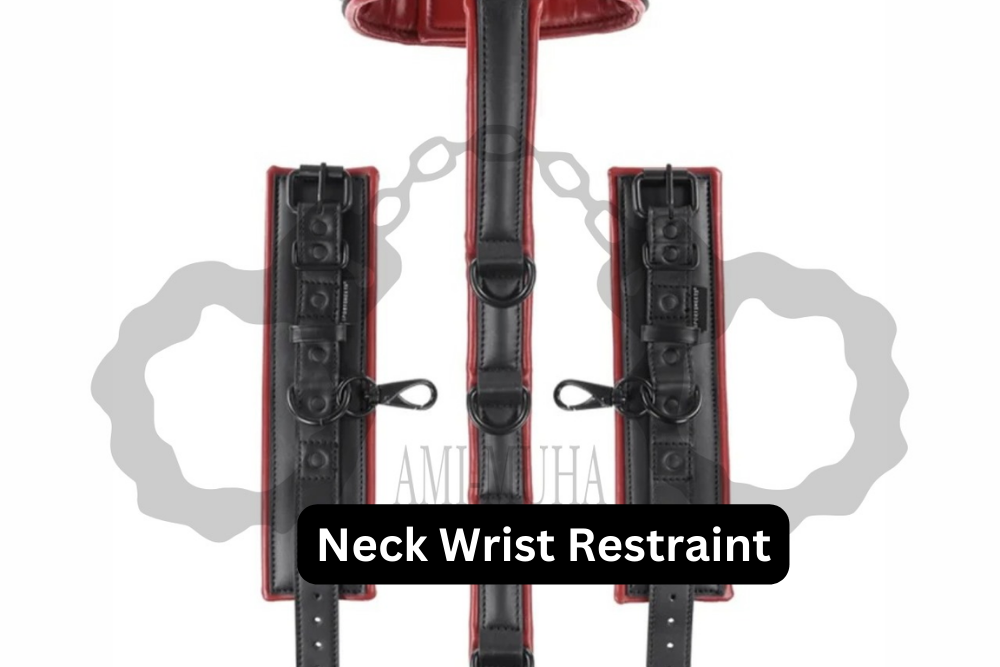Neck wrist restraint is a physical control technique often used in law enforcement, security, and self-defense scenarios. It involves applying pressure or control to an individual's neck and wrist to subdue or restrain them. While this technique can be effective, it is also controversial due to the potential risks associated with improper application. This article explores the concept of Neck Wrist Restraint its proper techniques, safety considerations, legal implications, and applications in various fields.
What is Neck Wrist Restraint?
Neck wrist restraint is a method of controlling an individual by simultaneously applying pressure or leverage to the neck and wrist. This technique is designed to limit the person's movement, reduce their ability to resist, and bring them under control. It is commonly used in situations where verbal commands or less forceful methods have failed to de-escalate a confrontation.
The restraint typically involves:
-
Neck Control: Applying gentle pressure or leverage to the neck to guide the individual's movement.
-
Wrist Control: Securing the wrist to prevent the person from using their hands to resist or attack.
Techniques for Applying Neck Wrist Restraint
Proper technique is critical to ensure the safety of both the individual being restrained and the person applying the restraint. Below are the key steps for applying a neck wrist restraint:
1. Assess the Situation
Before applying any restraint, evaluate the situation to determine if it is necessary. Consider the individual's behavior, the level of threat, and whether less forceful methods could be used.
2. Approach Safely
Approach the individual from a position of advantage, ensuring you have control over their movements. Maintain a safe distance until you are ready to apply the restraint.
3. Secure the Wrist
Grab the individual's wrist firmly but without excessive force. Use leverage to control their arm and limit their ability to resist.
4. Apply Neck Control
Place your other hand or arm on the individual's neck, applying gentle pressure to guide their movement. Avoid applying direct pressure to the front of the neck, as this can restrict airflow and cause injury.
5. Maintain Balance and Control
Keep your body balanced and stable to prevent the individual from overpowering you. Use your body weight to maintain control rather than relying solely on strength.
6. Monitor the Individual
Continuously monitor the individual's condition to ensure they are not in distress. Be prepared to release the restraint if necessary.
Safety Considerations
Neck wrist restraint carries inherent risks, particularly if applied incorrectly. Below are some critical safety considerations:
1. Avoid Excessive Pressure
Applying too much pressure to the neck can lead to serious injuries, including damage to the airway, blood vessels, or spine. Always use the minimum amount of force necessary to achieve control.
2. Be Aware of Medical Conditions
Individuals with pre-existing medical conditions, such as heart problems or respiratory issues, may be at higher risk of injury during a restraint. Exercise caution and seek medical assistance if needed.
3. Train Regularly
Proper training is essential to ensure that the restraint is applied safely and effectively. Regular practice can help you develop the skills and confidence needed to use this technique correctly.
4. Know When to Release
If the individual shows signs of distress, such as difficulty breathing or loss of consciousness, release the restraint immediately and seek medical help.
Legal and Ethical Implications
The use of neck wrist restraint is subject to legal and ethical scrutiny, particularly in law enforcement and security contexts. Below are some key considerations:
1. Use of Force Policies
Many organizations have strict policies governing the use of force, including restraints. Ensure that your actions comply with these policies and are proportionate to the threat.
2. Accountability
Be prepared to justify your use of a neck wrist restraint. Document the incident thoroughly, including the reasons for using the restraint and the individual's response.
3. Public Perception
The use of physical restraints can be controversial, particularly if it results in injury or death. Consider the potential impact on public trust and perception when using this technique.
Applications of Neck Wrist Restraint
Neck wrist restraint is used in various fields, including:
1. Law Enforcement
Police officers may use this technique to subdue suspects who are resisting arrest or posing a threat to others.
2. Security
Security personnel may use neck wrist restraint to control individuals who are causing disturbances or attempting to harm others.
3. Self-Defense
In self-defense situations, neck wrist restraint can be used to protect oneself from an attacker.
4. Martial Arts and Combat Sports
Some martial arts disciplines incorporate neck wrist restraint techniques as part of their training and practice.
Conclusion
Neck wrist restraint is a powerful technique that can be effective in controlling individuals who pose a threat or are resisting authority. However, it must be used with caution, proper training, and a clear understanding of the associated risks. By following proper techniques, adhering to safety guidelines, and considering the legal and ethical implications, you can minimize the potential for harm and ensure that this method is used responsibly.
Whether you are a law enforcement officer, security professional, or someone interested in self-defense, it is essential to approach neck wrist restraint with respect for its power and potential consequences. Always prioritize safety, accountability, and the well-being of all parties involved.
